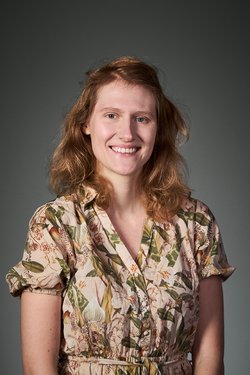Paulina Ewa Majchrzak

Laser can change the properties of two-dimensional materials
Quantum materials
Paulina Ewa Majchrzak has developed new methods for studying the electronic properties of quantum materials. The aim was to find new applicartions for the technology of the future.
Using nanotechnology, scientists can create materials that are only a few atoms thick. These so-called two-dimensional materials are extremely susceptible to change, a quality that can be used to make technological components faster, smaller and more flexible. As a PhD student, Paulina Ewa Majchrzak specialised in identifying such functions at a microscopic level.
An internship at the Artemis Lab in the UK during her undergraduate studies aroused her interest in the subject. This was where she got to know the research team from Aarhus University.
“We have studied the behaviour of electrons in solids when affected by an intense laser pulse. The time it takes the electrons to discharge can tell us something about the many complex quantum mechanical processes that occur. Sometimes, though, you can also change the properties of the materials,” Paulina Ewa Majchrzak says.
The two-dimensional metal vanadium diselenide (VSe2) is a good example. When cooled, its crystal structure changes and the material becomes electrically isolating.
“We learned that striking cold VSe2 with an intense laser pulse will make it conductive again in a split second. It is like changing from 0 to 1. However, it is harder to reset the material and return to the isolating state, and this is important to consider if you thinking of using VSe2 as a component in e.g. a memory unit,” Paulina Ewa Majchrzak explains.
Aside from working with lasers in labs throughout Europe, she has also contributed to the design of a new test model in the basement below the Department of Physics and Astronomy at Aarhus University. This enabled the researchers to characterise the electronic properties of twisted double-layer graphene, a new wonder material in the computer industry.
Paulina Ewa Majchrzak who is originally from Poland continues to apply spectroscopic methods to quantum materials as well as rechargeable batteries in a prestigious postdoc position at Stanford University, California.